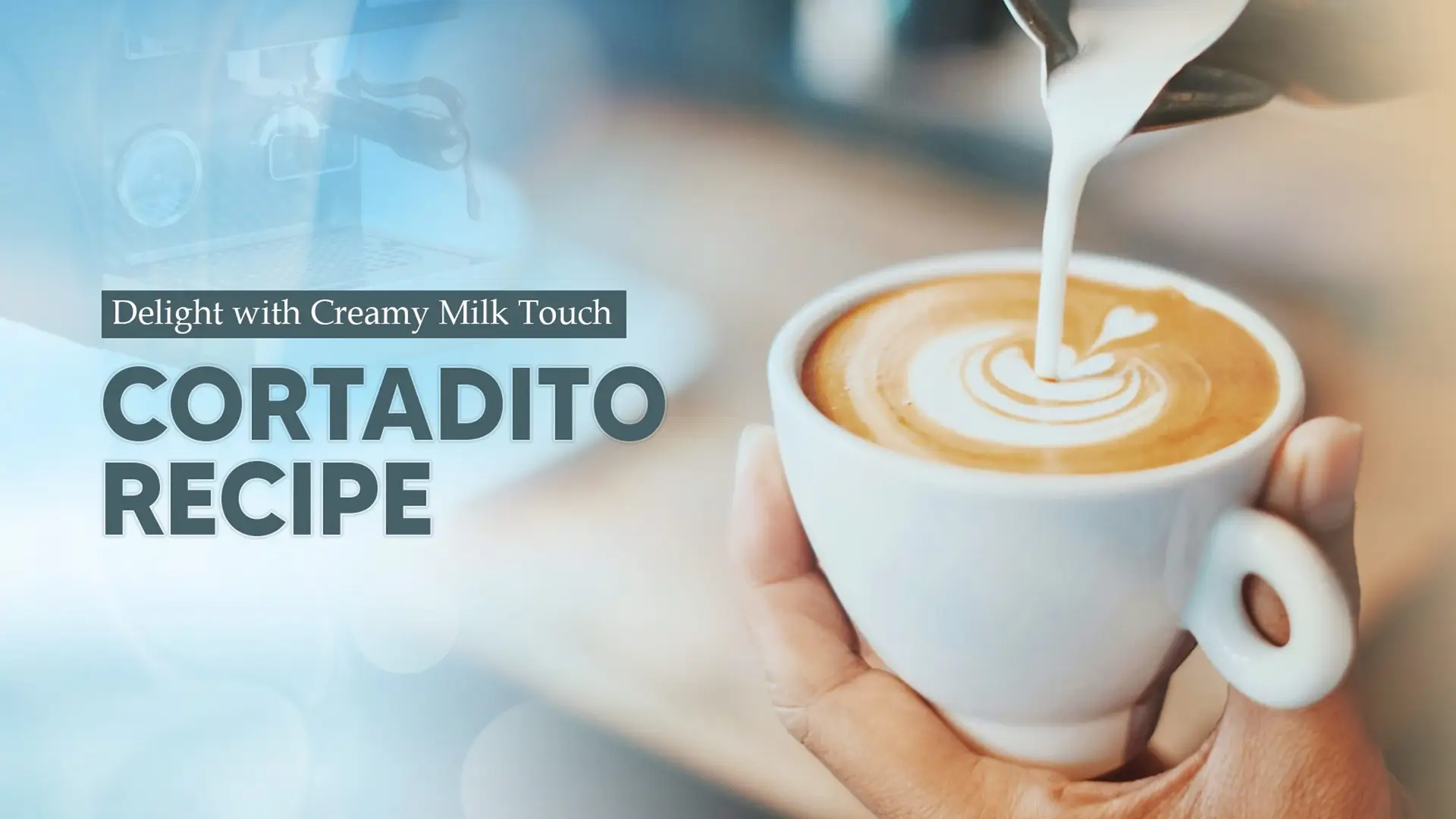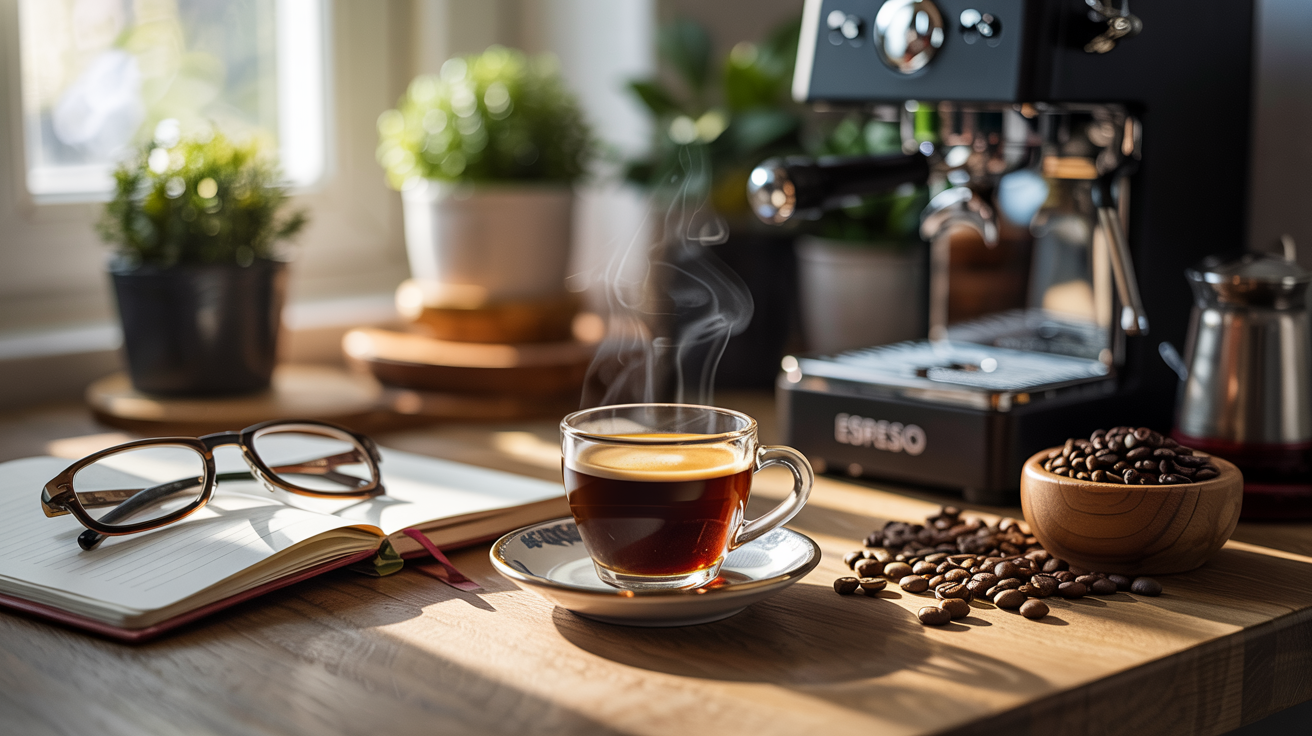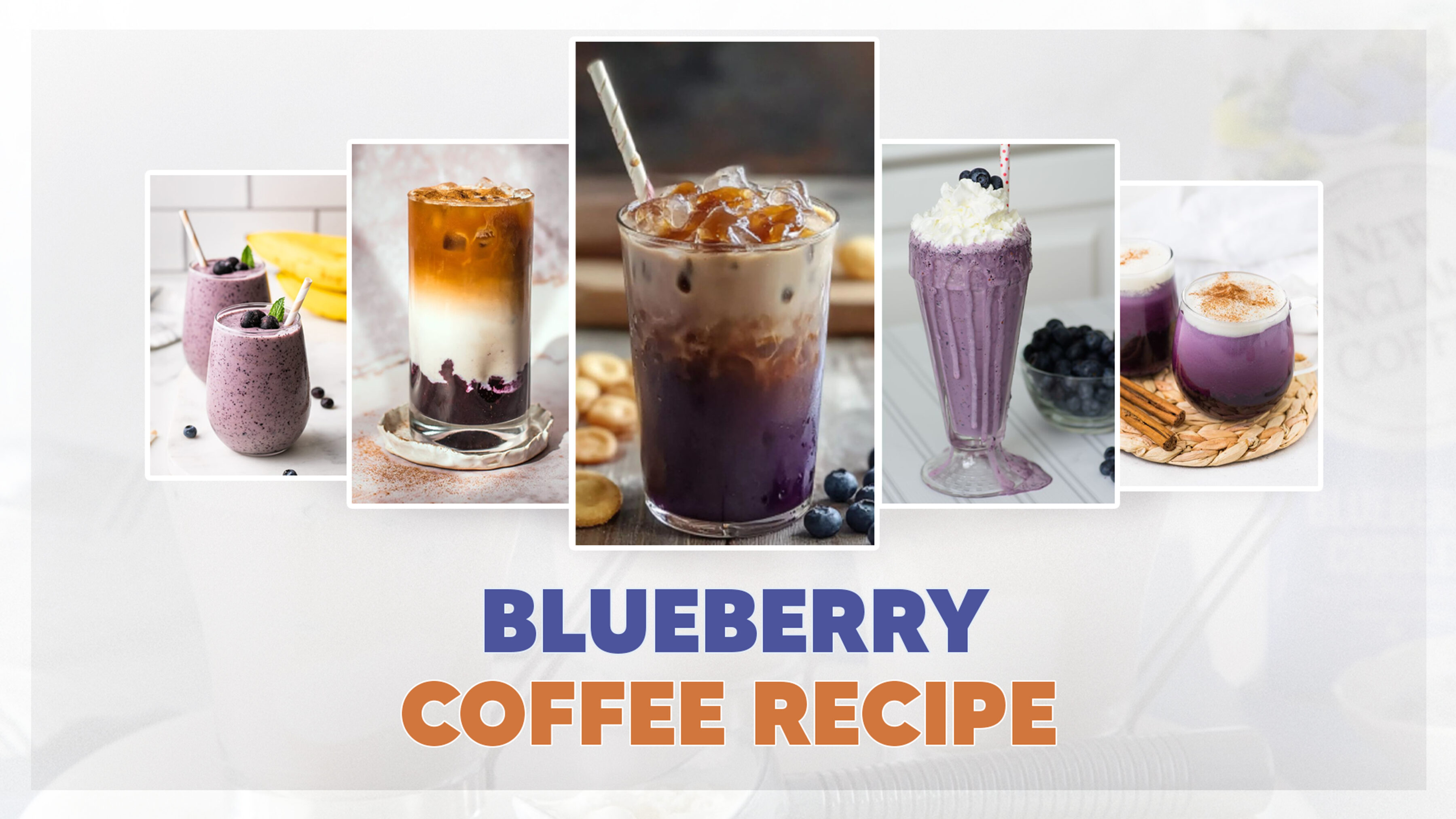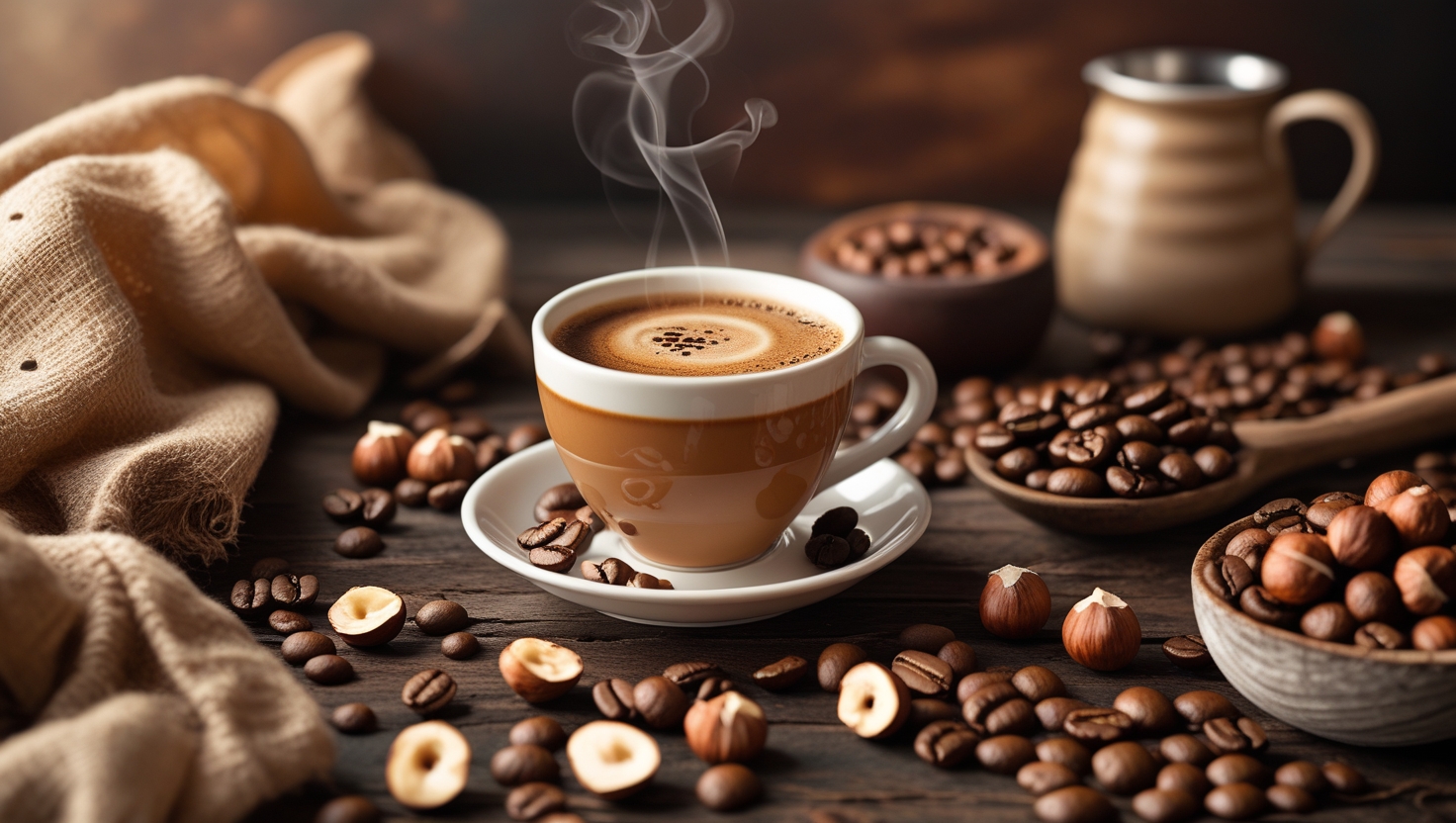Boost Your Day with Instant Espresso: Quick & Delicious! Boost Your Day with Instant Espresso: Quick & Delicious! Introduction A...
Read MoreBoost Your Day with Instant Espresso: Quick & Delicious!

Boost Your Day with Instant Espresso: Quick & Delicious!


Introduction
A brief overview of espresso beans and their significance in coffee culture.
Espresso beans are an essential aspect of coffee culture as they have a complex flavor and aromatic profile. Dark-roasted beans are chosen for use in espresso preparation because they extract to produce a shot that is a concentrated version of coffee. Espresso Beans are not just about taste; they are a mark of artisanry and love in brewing that sets the global stage of coffeehouse experiences. For every espresso lover and barista, recognizing espresso beans and how they differ from regular ones is the key to truly appreciating this beverage. Explore espresso and learn how these beans influence the lively culture around coffee.
It is important to choose the right espresso beans for the perfect brew.
When preparing an exquisite coffee drink, using the proper espresso beans is necessary. Depending on the type of beans used, the flavor notes of an espresso can vary in both taste and smell. Because beans vary in their level of acidity, body, and flavor profile, it is very important to select the beans that are compatible with one’s personal brewing style and preference so that a balanced shot can be achieved every time. Also, take into consideration the roast level because light, medium, and dark roasts can add varying complexities to your espresso. Choosing the right beans takes time, but it’s worth the effort for a truly rewarding coffee experience.
Understanding Espresso Beans
Definition of espresso beans and how they differ from regular coffee beans.
Espresso beans are coffee beans that are carefully handpicked and roasted for espresso coffee only. Unlike coffee beans, which can be brewed via various methods, espresso beans are often brewed in a singular way. These beans are roasted darker than regular coffee beans in order to enhance bold flavors while cutting down on acidity. Understanding espresso beans includes the fact that they are usually a mix of Arabica and Robusta beans. They were selected due to their unique characteristics, which resulted in heavy cream and taste. This is very important for those coffee lovers in pursuit of the ideal shot. The choice of beans is fundamental to the flavor, aroma, and quality of the espresso.
Key characteristics of espresso beans that enhance flavor and aroma.
The aroma and flavor are equally as important in the value of espresso beans and their espresso shot. Deep-roasted beans are the most suitable for espressos since their ears and sugars are most readily available for extraction during the roasting process. The combined Robusta and Arabica varieties contribute to balanced flavor and aroma; the Arabica brings complexity and sweetness, while Robusta provides strength and crema. The coarseness of the grinds matters, too, because brewing will be ineffective with a coarse grind’s deep aromatic notes. If coffee enthusiasts understand these characteristics, then they will learn how to relish the nuances of their espresso, which will bring the entire coffee experience to the next level.
Best Coffee Beans for Espresso
Top recommended brands and blends for espresso lovers.
Espresso aficionados can make the whole process easier by picking proper coffee beans. Some brands that are known for their espresso blends are Lavazza, Illy, and Stumptown. Beans, for example, have certain attributes that should be observed, such as roast, Its level, origin, and flavor. From a flavor perspective, a medium to dark roast offers richness, while single-origin beans can add complex single notes. Espresso lovers will appreciate the taste blends of Lavazza Super Crema and Illy Classico, which offer a middle ground for a multitude of tastes. With coffee being loved globally, blends from these brands help find the perfect espresso that compliments coffee rituals and satisfies the taste buds.
User reviews and experiences with different beans.
A user’s commentary and exposure to different types of espresso beans serve to be helpful for coffee lovers. Many users commend Lavazza and Illy for always maintaining their quality as well as the rich taste, frequently mentioning the smooth crema produced. Others express their excitement while trying single-origin beans due to their distinct taste and aromatic blending. Stumptown’s Hair Bender focuses more on its taste and less on its acid balance because it is a lot more complex. Using user reviews helps buyers canvas as the personal experience of purchasing the espresso beans unveils information that aids in the buying process. Shifting the views enhances the user’s awareness and appreciation of different types of espresso.
Espresso Beans vs Coffee Beans
Key differences in roasting, grinding, and brewing methods.
Essential aspects in roasting, grinding, and brewing will stand out when espresso beans are compared to coffee beans. Espresso beans are roasted darker, which brings out the flavor and lowers the acidity, while coffee beans are roasted differently to suit people’s tastes. The grind size of coffee beans for espresso is finer so that it can be brewed well, but with drip coffee, espresso beans are coarsely ground. Espresso is withed and brewed under pressure, thus making a concentrated shot that contrasts with the smoother taste of other brewing techniques. Understanding these differences helps coffee lovers appreciate the nuances of each type.
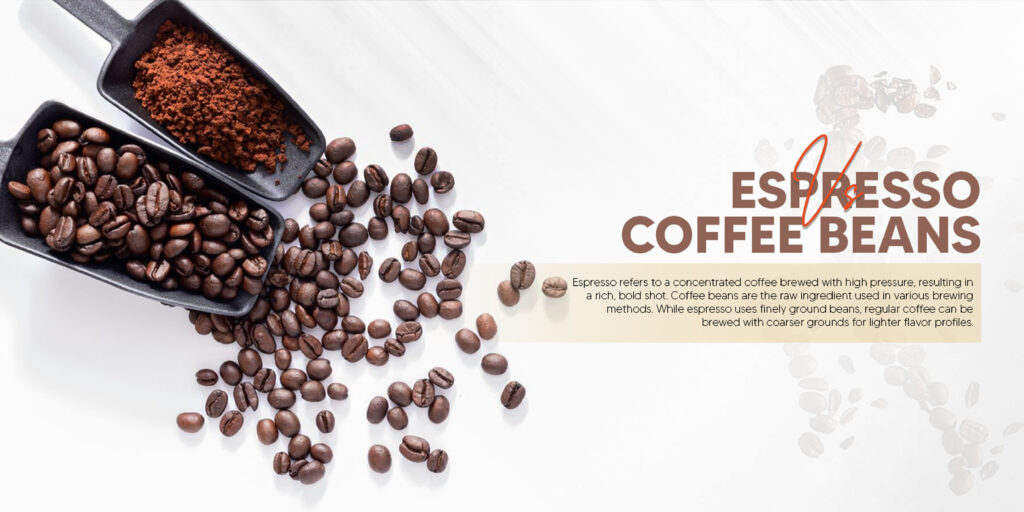
How the choice impacts flavor profiles and brewing techniques.
The taste profiles of espresso beans are different from regular beans, with some aspects of brewing differing greatly. Regular coffee beans, for instance, can be roasted lighter, allowing for a wider range of flavor notes when brewed. Espresso beans, on the other hand, are often roasted darker, thus leading to the bold and rich flavors high demand brings, which adds to the greatness of the beauty. Their grind is finer, which helps with extraction at a quicker rate when put into the espresso machines, resulting in a concentrated shot with intense aromas. Understanding how these choices impact brewing styles helps people enjoy coffee more, consequently leading to a more gratifying coffee ritual.
Organic Espresso Beans
Guide to finding high-quality org connoisseurs.
For a connoisseur’s cup of coffee, attaining high-quality espresso beans is a must. For most coffee lovers, finding sustainably grown organic coffee beans with rich taste is no easy task. Selecting only organic coffee beans helps reduce exposure to pesticides while increasing the overall taste, for the decomposition of organic farming is good for soil health and biodiversity. When trying to find the best organic coffee brands, look out for certifications from reliable agencies and read customer feedback focusing primarily on taste and scent. Ethiopian Yirga Chefe and Peruvian organic blends are a couple of names known for their deep and sophisticated coffee flavors. Choosing organic coffee enhances flavor and supports the green movement in the coffee industry.
Comparison of taste and sustainability between organic and non-organic beans.
Taste and sustainability considerations matter for a coffee lover when looking at organic beans versus non-organic beans. The lack of artificial fertilizers and pesticides coffee in the coffee’s natural features is fully expressed, which is why organic beans are often considered to have the richest flavor. Some coffee fanatics find that organic beans are smoother and bolder in taste. In terms of sustainability, organic farming contributes to healthy ecosystems and increases biodiversity, which leads to reduced environmental harm. Non-organic beans, while usually cheaper, do not contain the same level of care and consideration, including the use of chemicals. The use of organic beans ensures a richer coffee experience along with the support for sustainable agriculture.
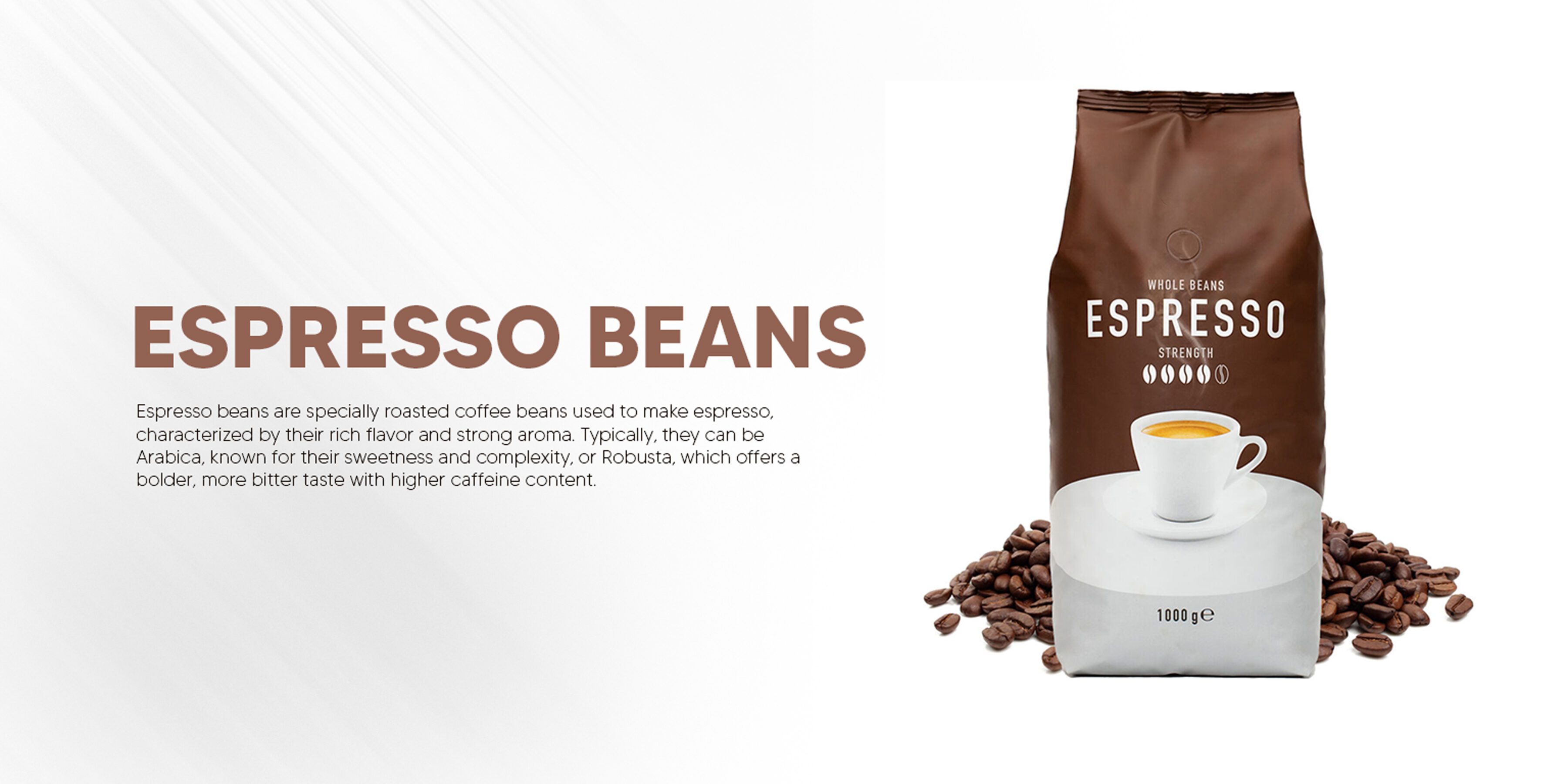
Brewing the Perfect Espresso
Tips and techniques for brewing espresso using the right beans.
Crafting the ideal blend of espresso begins with the selection of espresso beans since the speed at which they are roasted dictates the final profile. Beans with a rich aroma that have been freshly roasted within the past two weeks are best and should be ground to a table salt-like consistency. Using high-quality espresso machines with the right pressure and temperatures (90-96°C or 194-205°F) is crucial for quality. The time spent extracting the final brew is critical, so timing should be done carefully. Achieve a time span of roughly 25 – 30 seconds to achieve ideal brew times. Exploring new bean blends is key to crafting a unique, unforgettable espresso experience.
Equipment recommendations for optimal extraction.
To maximize extraction during espresso brewing, investing in the right equipment is important. First, buy an espresso machine that has an excellent ability to maintain consistent pressure and temperature control at around 9 bars. A good grinder is also essential. To achieve the maximum flavor extraction, grinding should be done using a burr grinder which guarantees the desired size of the resulting grind. In addition, a digital scale will help measure coffee and water more precisely for the right coffee-to-water ratio. A well-designed tamper allows for the coffee grounds to be evenly compressed during tamping. Last but not least, a milk frother can improve your espresso drinks by enabling you to prepare tasty lattes and cappuccinos.
Common mistakes to avoid when brewing espresso.
Preparing espresso may appear quite simple at first glance, but common errors can significantly complicate your result. Avoid old beans and use fresh ones; also, choose the right grind size for optimal extraction and taste. If you do not tamp in a level manner, you risk channeling, which will lead to poor-quality espresso. Always be cautious of the quality of water- it is important for the taste. If it is unchecked, bad-tasting espresso will not don’t result. Also, don’t be too hasty. Allow the machine to heat up, aiming for a brew time of 25-30 seconds for optimal results. If these challenges are met, fantastic espresso will be the result.
Recap of the importance of selecting quality espresso beans.
As stated in the above paragraphs, good espresso beans need to be selected to enjoy a rich cup of coffee. Quality cup’s innovations enhance the flavor profile of the cup and increase sustainability in coffee farming. Sourcing organic or ethically procured beans helps preserve biodiversity and alleviates the harmful methods of cultivation. You get the espresso experience premium beans offer, together with the nuances in flavor profiles. Ensuring high standards when ordering espresso beans guarantees a fully flavored cup every time you brew coffee.
Popular Posts
Cortadito Coffee: A Sweet, Bold Cuban Espresso Drink
Cortadito Coffee: Why This Cuban Drink Should Be Your Next Favorite Cortadito Coffee: Why This Cuban Drink Should Be Your...
Read MoreDecaf Coffee: Enjoy Rich Flavor Without the Caffeine Jitters
Health Benefits of Decaf Coffee: A Smarter Way to Enjoy Your Brew Health Benefits of Decaf Coffee: A Smarter Way...
Read MoreChildren’s Coffee: A Kid-Friendly Coffee Alternative
Childrens Coffee That Supports Brain and Body Growt Childrens Coffee That Supports Brain and Body Growt Introduction: Understanding Childrens Coffee...
Read MoreEthiopia Coffee: Rich Flavors of Africa’s Best Brew
The Ultimate Guide to Brewing, Sourcing, and Tasting Ethiopia Coffee The Ultimate Guide to Brewing, Sourcing, and Tasting Ethiopia Coffee...
Read More
Introduction
A brief overview of espresso beans and their significance in coffee culture.
Espresso beans are an essential aspect of coffee culture as they have a complex flavor and aromatic profile. Dark-roasted beans are chosen for use in espresso preparation because they extract to produce a shot that is a concentrated version of coffee. Espresso Beans are not just about taste; they are a mark of artisanry and love in brewing that sets the global stage of coffeehouse experiences. For every espresso lover and barista, recognizing espresso beans and how they differ from regular ones is the key to truly appreciating this beverage. Explore espresso and learn how these beans influence the lively culture around coffee.
It is important to choose the right espresso beans for the perfect brew.
When preparing an exquisite coffee drink, using the proper espresso beans is necessary. Depending on the type of beans used, the flavor notes of an espresso can vary in both taste and smell. Because beans vary in their level of acidity, body, and flavor profile, it is very important to select the beans that are compatible with one’s personal brewing style and preference so that a balanced shot can be achieved every time. Also, take into consideration the roast level because light, medium, and dark roasts can add varying complexities to your espresso. Choosing the right beans takes time, but it’s worth the effort for a truly rewarding coffee experience.
Understanding Espresso Beans
Definition of espresso beans and how they differ from regular coffee beans.
Espresso beans are coffee beans that are carefully handpicked and roasted for espresso coffee only. Unlike coffee beans, which can be brewed via various methods, espresso beans are often brewed in a singular way. These beans are roasted darker than regular coffee beans in order to enhance bold flavors while cutting down on acidity. Understanding espresso beans includes the fact that they are usually a mix of Arabica and Robusta beans. They were selected due to their unique characteristics, which resulted in heavy cream and taste. This is very important for those coffee lovers in pursuit of the ideal shot. The choice of beans is fundamental to the flavor, aroma, and quality of the espresso.
Key characteristics of espresso beans that enhance flavor and aroma.
The aroma and flavor are equally as important in the value of espresso beans and their espresso shot. Deep-roasted beans are the most suitable for espressos since their ears and sugars are most readily available for extraction during the roasting process. The combined Robusta and Arabica varieties contribute to balanced flavor and aroma; the Arabica brings complexity and sweetness, while Robusta provides strength and crema. The coarseness of the grinds matters, too, because brewing will be ineffective with a coarse grind’s deep aromatic notes. If coffee enthusiasts understand these characteristics, then they will learn how to relish the nuances of their espresso, which will bring the entire coffee experience to the next level.
Best Coffee Beans for Espresso
Top recommended brands and blends for espresso lovers.
Espresso aficionados can make the whole process easier by picking proper coffee beans. Some brands that are known for their espresso blends are Lavazza, Illy, and Stumptown. Beans, for example, have certain attributes that should be observed, such as roast, Its level, origin, and flavor. From a flavor perspective, a medium to dark roast offers richness, while single-origin beans can add complex single notes. Espresso lovers will appreciate the taste blends of Lavazza Super Crema and Illy Classico, which offer a middle ground for a multitude of tastes. With coffee being loved globally, blends from these brands help find the perfect espresso that compliments coffee rituals and satisfies the taste buds.
User reviews and experiences with different beans.
A user’s commentary and exposure to different types of espresso beans serve to be helpful for coffee lovers. Many users commend Lavazza and Illy for always maintaining their quality as well as the rich taste, frequently mentioning the smooth crema produced. Others express their excitement while trying single-origin beans due to their distinct taste and aromatic blending. Stumptown’s Hair Bender focuses more on its taste and less on its acid balance because it is a lot more complex. Using user reviews helps buyers canvas as the personal experience of purchasing the espresso beans unveils information that aids in the buying process. Shifting the views enhances the user’s awareness and appreciation of different types of espresso.
Espresso Beans vs Coffee Beans
Key differences in roasting, grinding, and brewing methods.
Essential aspects in roasting, grinding, and brewing will stand out when espresso beans are compared to coffee beans. Espresso beans are roasted darker, which brings out the flavor and lowers the acidity, while coffee beans are roasted differently to suit people’s tastes. The grind size of coffee beans for espresso is finer so that it can be brewed well, but with drip coffee, espresso beans are coarsely ground. Espresso is withed and brewed under pressure, thus making a concentrated shot that contrasts with the smoother taste of other brewing techniques. Understanding these differences helps coffee lovers appreciate the nuances of each type.

How the choice impacts flavor profiles and brewing techniques.
The taste profiles of espresso beans are different from regular beans, with some aspects of brewing differing greatly. Regular coffee beans, for instance, can be roasted lighter, allowing for a wider range of flavor notes when brewed. Espresso beans, on the other hand, are often roasted darker, thus leading to the bold and rich flavors high demand brings, which adds to the greatness of the beauty. Their grind is finer, which helps with extraction at a quicker rate when put into the espresso machines, resulting in a concentrated shot with intense aromas. Understanding how these choices impact brewing styles helps people enjoy coffee more, consequently leading to a more gratifying coffee ritual.
Organic Espresso Beans
Guide to finding high-quality org connoisseurs.
For a connoisseur’s cup of coffee, attaining high-quality espresso beans is a must. For most coffee lovers, finding sustainably grown organic coffee beans with rich taste is no easy task. Selecting only organic coffee beans helps reduce exposure to pesticides while increasing the overall taste, for the decomposition of organic farming is good for soil health and biodiversity. When trying to find the best organic coffee brands, look out for certifications from reliable agencies and read customer feedback focusing primarily on taste and scent. Ethiopian Yirga Chefe and Peruvian organic blends are a couple of names known for their deep and sophisticated coffee flavors. Choosing organic coffee enhances flavor and supports the green movement in the coffee industry.
Comparison of taste and sustainability between organic and non-organic beans.
Taste and sustainability considerations matter for a coffee lover when looking at organic beans versus non-organic beans. The lack of artificial fertilizers and pesticides coffee in the coffee’s natural features is fully expressed, which is why organic beans are often considered to have the richest flavor. Some coffee fanatics find that organic beans are smoother and bolder in taste. In terms of sustainability, organic farming contributes to healthy ecosystems and increases biodiversity, which leads to reduced environmental harm. Non-organic beans, while usually cheaper, do not contain the same level of care and consideration, including the use of chemicals. The use of organic beans ensures a richer coffee experience along with the support for sustainable agriculture.

Brewing the Perfect Espresso
Tips and techniques for brewing espresso using the right beans.
Crafting the ideal blend of espresso begins with the selection of espresso beans since the speed at which they are roasted dictates the final profile. Beans with a rich aroma that have been freshly roasted within the past two weeks are best and should be ground to a table salt-like consistency. Using high-quality espresso machines with the right pressure and temperatures (90-96°C or 194-205°F) is crucial for quality. The time spent extracting the final brew is critical, so timing should be done carefully. Achieve a time span of roughly 25 – 30 seconds to achieve ideal brew times. Exploring new bean blends is key to crafting a unique, unforgettable espresso experience.
Equipment recommendations for optimal extraction.
To maximize extraction during espresso brewing, investing in the right equipment is important. First, buy an espresso machine that has an excellent ability to maintain consistent pressure and temperature control at around 9 bars. A good grinder is also essential. To achieve the maximum flavor extraction, grinding should be done using a burr grinder which guarantees the desired size of the resulting grind. In addition, a digital scale will help measure coffee and water more precisely for the right coffee-to-water ratio. A well-designed tamper allows for the coffee grounds to be evenly compressed during tamping. Last but not least, a milk frother can improve your espresso drinks by enabling you to prepare tasty lattes and cappuccinos.
Common mistakes to avoid when brewing espresso.
Preparing espresso may appear quite simple at first glance, but common errors can significantly complicate your result. Avoid old beans and use fresh ones; also, choose the right grind size for optimal extraction and taste. If you do not tamp in a level manner, you risk channeling, which will lead to poor-quality espresso. Always be cautious of the quality of water- it is important for the taste. If it is unchecked, bad-tasting espresso will not don’t result. Also, don’t be too hasty. Allow the machine to heat up, aiming for a brew time of 25-30 seconds for optimal results. If these challenges are met, fantastic espresso will be the result.
Recap of the importance of selecting quality espresso beans.
As stated in the above paragraphs, good espresso beans need to be selected to enjoy a rich cup of coffee. Quality cup’s innovations enhance the flavor profile of the cup and increase sustainability in coffee farming. Sourcing organic or ethically procured beans helps preserve biodiversity and alleviates the harmful methods of cultivation. You get the espresso experience premium beans offer, together with the nuances in flavor profiles. Ensuring high standards when ordering espresso beans guarantees a fully flavored cup every time you brew coffee.
Popular Posts
Discover the Best Espresso Coffee for Rich, Bold Flavors
Master the Art of Espresso Coffee: Secrets to the Perfect Brew Master the Art of Espresso Coffee: Secrets to the...
Read MoreBlueberry Coffee: A Sweet and Fruity Coffee Experience
The Ultimate Guide to Blueberry Coffee: Recipes, Benefits The Ultimate Guide to Blueberry Coffee: Recipes, Benefits Introduction: The rise of...
Read MoreKeurig Espresso: Brew Bold Espresso with Your Keurig Machine
Keurig Espresso: Can Your Keurig Brew Espresso? Keurig Espresso: Can Your Keurig Brew Espresso? 1. Introduction: Keurig Meets Espresso Keurig...
Read MoreHazelnut Coffee: A Perfect Blend of Nutty and Sweet Flavors
Hazelnut Coffee: Everything You Need to Know for a Perfect Brew Hazelnut Coffee: Everything You Need to Know for a...
Read MoreColombian Coffee: Discover the Rich Flavors of Colombia’s Best
Discover the Richness of Colombia Coffee: A Complete Guide Discover the Richness of Colombia Coffee: A Complete Guide Introduction to...
Read MoreEthiopia Coffee: Rich Flavors of Africa’s Best Brew
The Ultimate Guide to Brewing, Sourcing, and Tasting Ethiopia Coffee The Ultimate Guide to Brewing, Sourcing, and Tasting Ethiopia Coffee...
Read More

